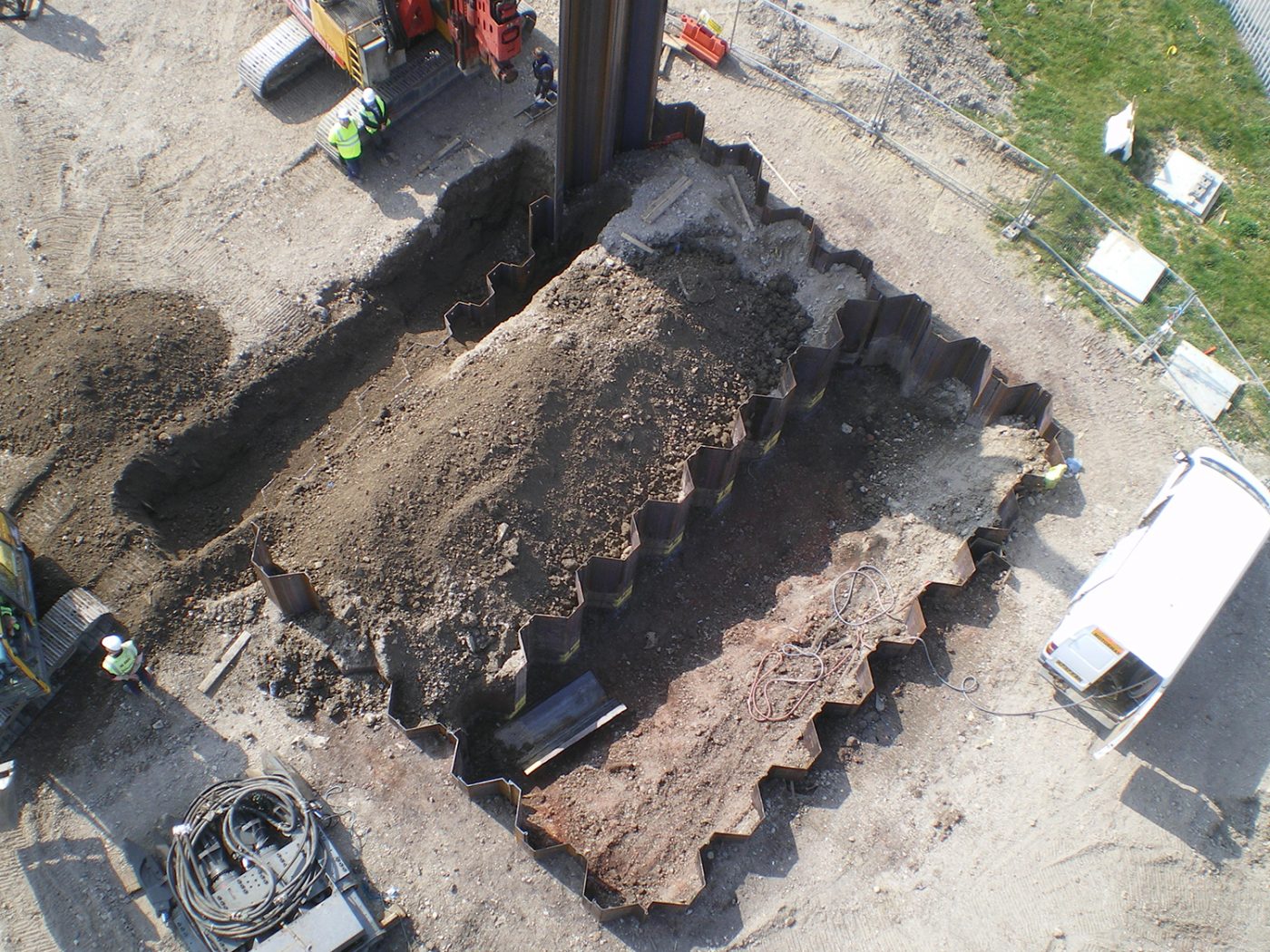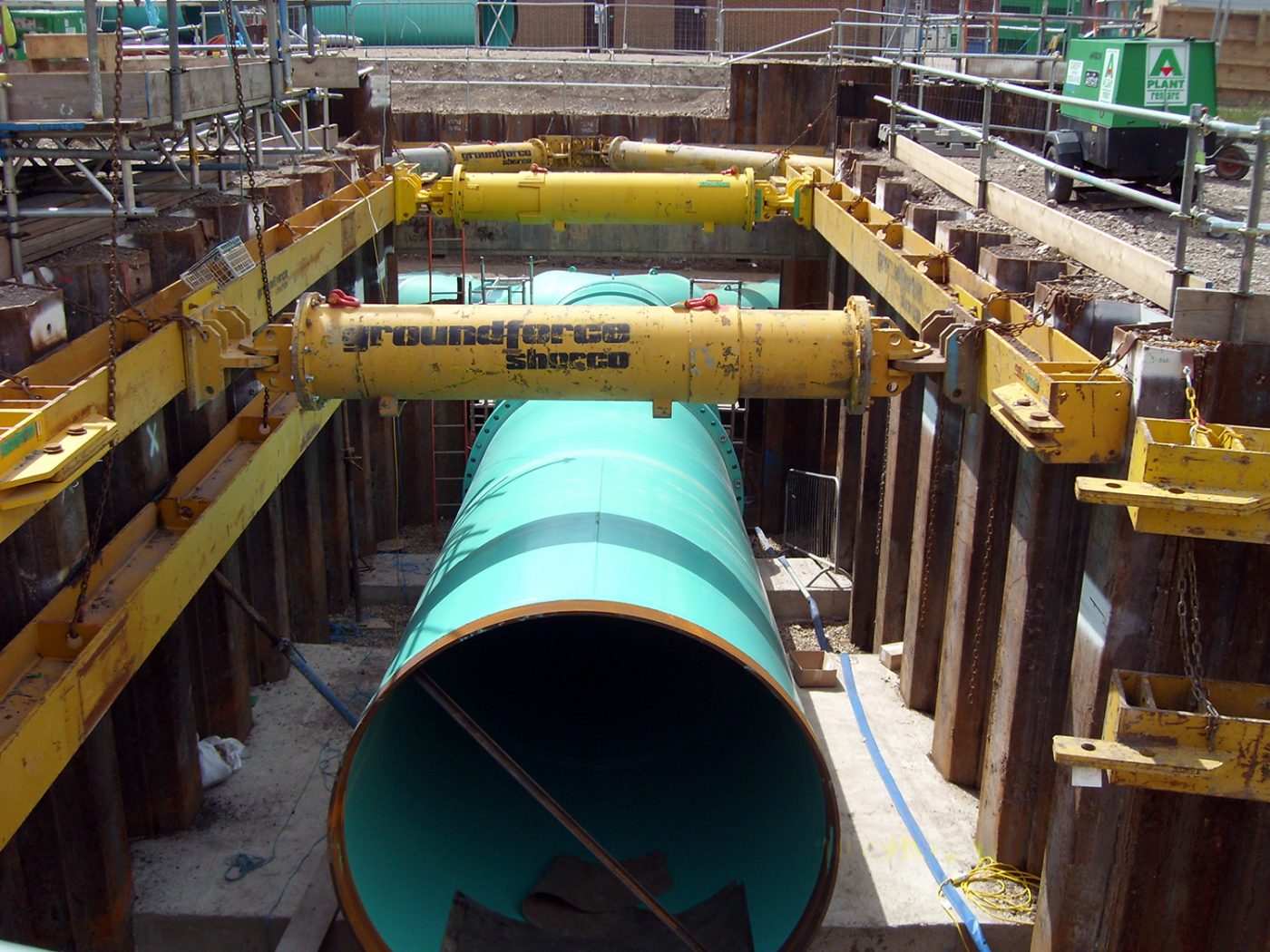Eastney Pumping Station manages the foul sewage and rainwater for the historic navel city of Portsmouth. In line with the recommendations of the Pitt report and the increased likelihood of flooding, the flood defence improvement work involved tapping into one of the 2 main interceptor sewers bringing effluent into Eastney and diverting part of the flow via the 4 new submersible electric pumps with a new Ø2.2m pipeline transferring flow upto the storm tanks at Fort Cumberland.
The new pumping station sits underground in a circular concrete structure, on the side of the concrete cylinder, main contractor 4 Delivery (a consortium of United Utilities, Costain and MWH) built a concrete box to receive the inflow from the interceptor sewers. From the circular pumping station the Ø2.2m pipeline snakes 120m across the site to join two Ø1.8m steel pipes.
Excavating the trench for the 2.2m pipeline meant negotiating the numerous underground obstacles and hidden services. The site was restricted by residential properties on one side and an existing pumping station on the other.
“we worked to ensure a silent piling system was used and all sheet piles were installed with no disturbance to properties neighbouring the site,” explaned site manager for 4 Delivery Martin Tresidder.

Technical Specifications
4 Delivery employed Dawson Contract Piling to drive a series of 9m long L605 and 7m L604 interlocking steel sheet piles to support the side walls during excavation and installation of the pipeline.
Work commenced with the LRB125XL fixed mast leader rig pre-augering through the upper strata of dense granular material to the clay interface.
The auger was then removed and a resonance free Vibro unit fitted to the LRB125XL. The piles were picked up in the traditional way and installed through the previously loosened upper strata onto the clay interface below, using the crowd force of the rig only.
A max 5% vibro capacity being used in short busts only, to overcome any minor resistance.
Once the piles had been positioned, the LRB125XL then removed the vibro unit and fitted on the Dawson Construction Plant revolutionary two cylinder push pull system. Each cylinder gently pushing the piles to level using forces from 70-200 tons.
The larger AZ26-700 piles at 15.3m long were installed as previously described but due to their greater need for penetration the Dawson Construction Plant four cylinder push pull was used for the final drive, using forces ranging from 200-400 tons.


ADVANTAGES OF DAWSON SYSTEM
- Fast installation techniques deliver high productivity,resulting in economic savings.
- Quiet and vibration-less.
- Easily configured to suit Z, U & H-pile profiles in groups of between 2 to 6.
- No reaction frame required to start pile installation or f corner piles – unlike conventional pile presses.
- Standard Z-piles can be installed close to property boundaries – maximising development footprint.
- Leader guided operation reduces interlock friction and produces high quality, accurate installations.
- Piles can be removed, returning site to original ‘greenfield’ condition.
- The piling rig can pitch its own piles so no crane required..
- Quick and simple replacement of front end equipment on piling rig, saving on time and money with the need for only one piling rig to do all operations.
Steel Piling Group, C/O SCI, Silwood Park, Unit D, Buckhurst Road, Ascot ,Berkshire. SL5 7QN
E: info@steelpilinggroup.org

© Copyright 2018 Steel Piling Group
Terms & Conditions | Privacy Policy

